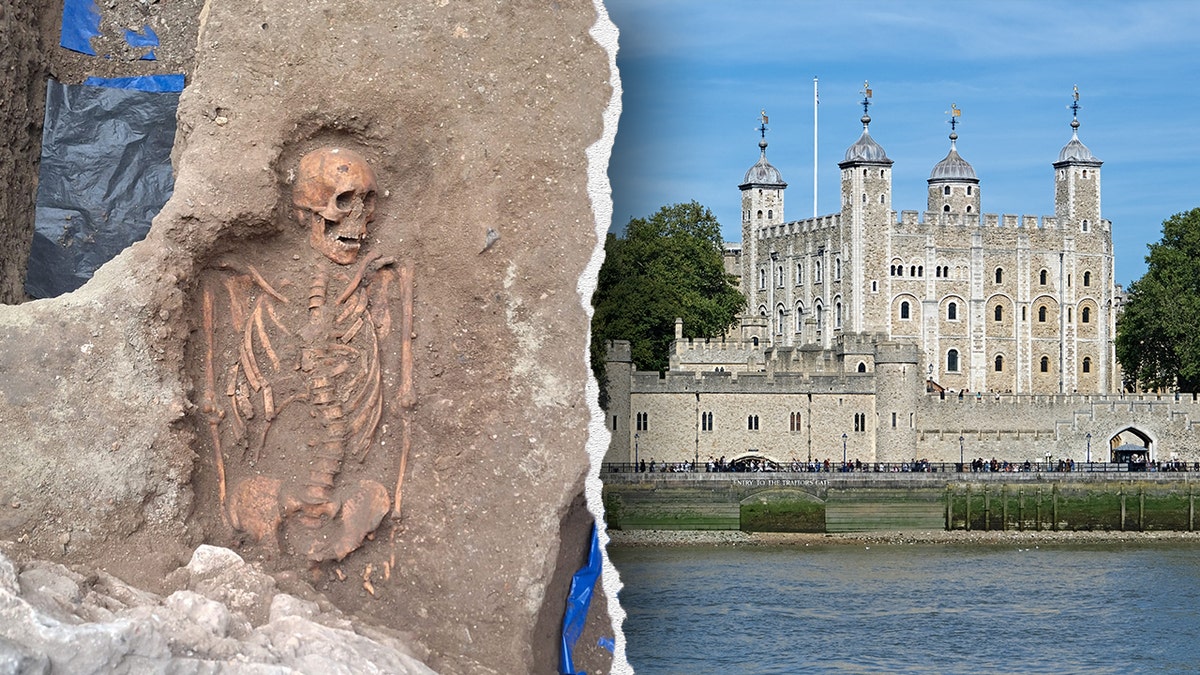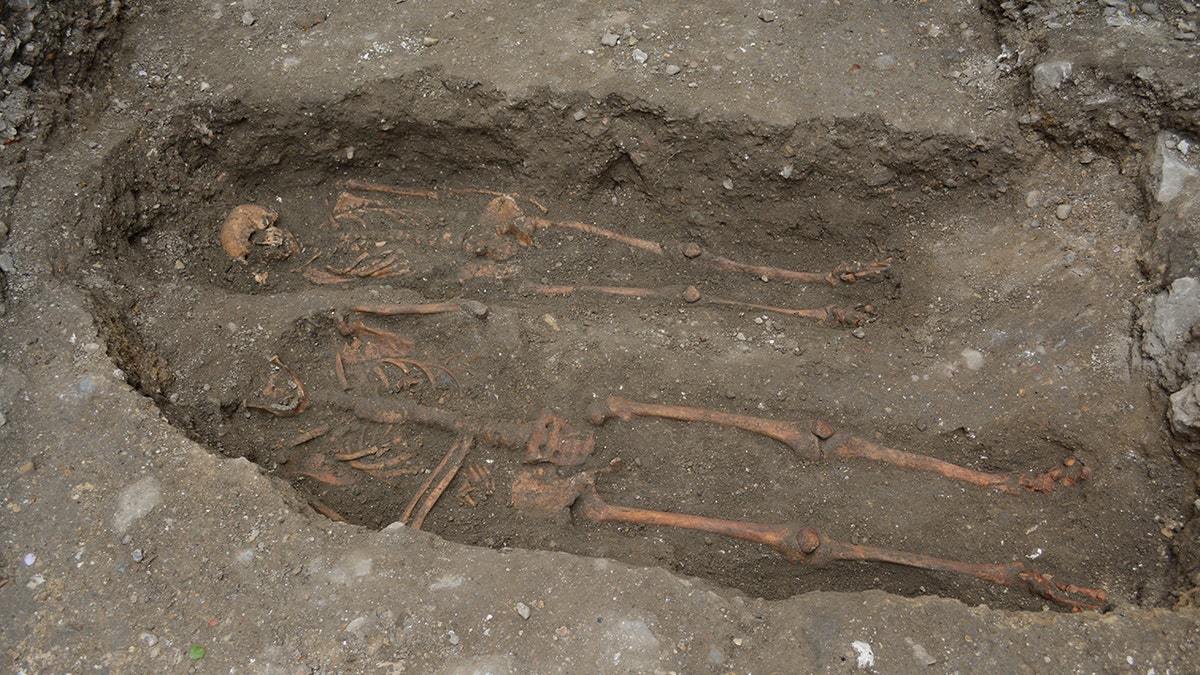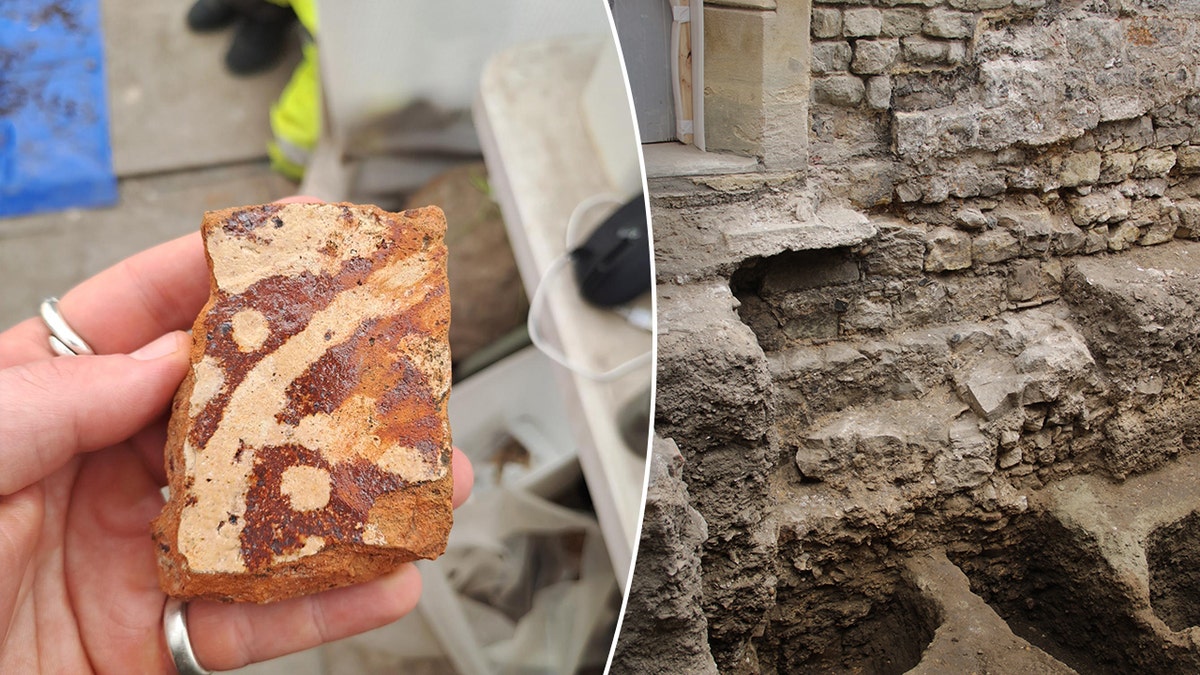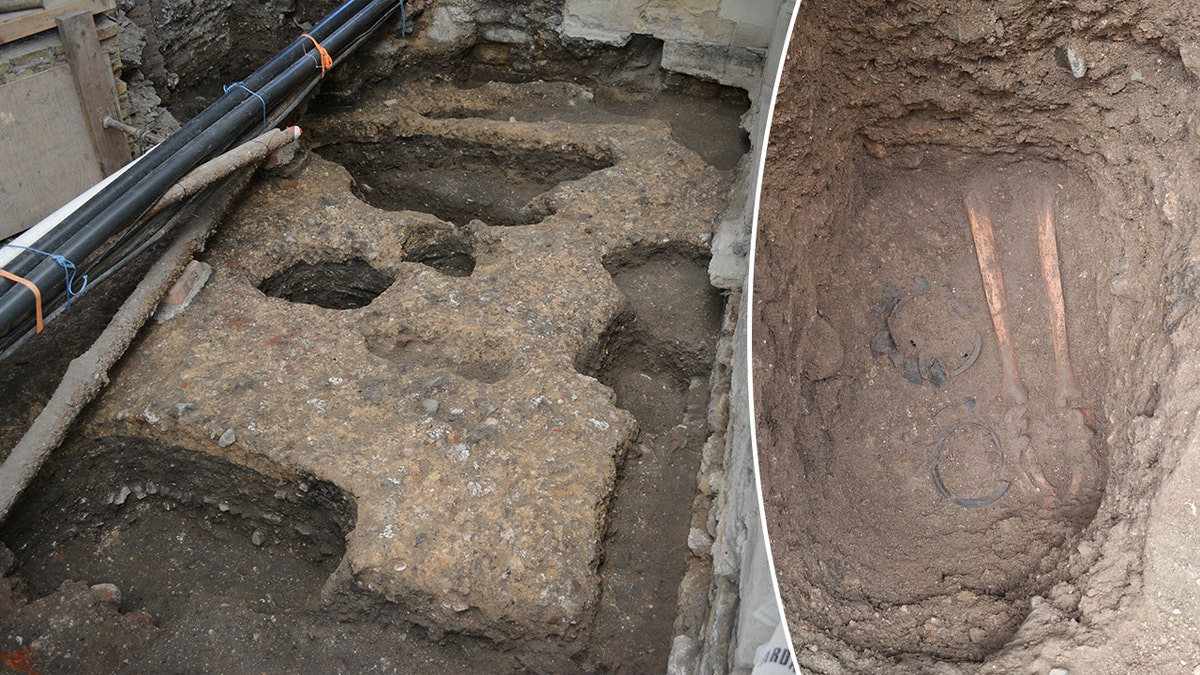

Archaeologists recently uncovered the ancient skeletons of possible Black Death victims – buried just beneath one of London's most popular tourist spots.
Historic Royal Palaces (HRP), the organization that manages the Tower of London, shared the news with Fox News Digital. The discoveries were made during an excavation in the spring, marking the first dig at the Tower of London in three decades.
It took place ahead of a scheduled renovation of the Church of St. Peter ad Vincula, a chapel that dates back to the 15th century.
SINKHOLE IN HISTORIC CITY REVEALS MEDIEVAL HOSPITAL HIDING JUST BENEATH STREET LEVEL
"As a final resting place for many who lived or were imprisoned within the Tower’s walls – including three queens and two Catholic saints – [the church] undoubtedly has a few stories to tell," HRP said. "But much of its earlier history remains unknown."
It added, "Now, finds from the most significant excavation at the Tower in a generation are beginning to shed light on both the development of its chapel and some of the people connected with it."

Archaeologists uncovered medieval burials beneath the Tower of London during a spring 2025 excavation project. (Historic Royal Palaces; iStock)
One of the most eyebrow-raising finds was a mass grave of 14th-century skeletons, which officials said were "possibly linked to the Black Death."
In a separate discovery, archaeologists found even older graves in coffins – likely belonging to high-status individuals.
HISTORY BUFF UNCOVERS LOST MEDIEVAL MONASTERY THANKS TO STRANGE MAP SYMBOL
"Three skeletons from the late 12th or early 13th century were also uncovered," the statement read. "These individuals appeared to have been buried in coffins — an unusual practice at the time, possibly indicating high-status burials."

Researchers discovered 20 sets of human remains, some dating back to the 12th and 13th centuries. (Historic Royal Palaces)
In total, the remains of 20 individuals were found during the excavation.
Officials also identified a fragment of a burial shroud at the site, which HRP described as "extremely rare" since it is made of fabric.
"This is just the tip of the iceberg — there is so much more to learn through further analysis about the people, as well as the buildings."
"One separate burial contained two 12th- to early 13th-century pots filled with charcoal – exceptionally rare examples of medieval grave goods previously recorded only once in England," the statement added.
"These finds will now undergo further scientific analysis."
Alfred Hawkins, a curator of historic buildings at HRP, described the excavation as a "generational opportunity."

Part of a medieval glazed tile, seen at left, was found, along with the foundations of a chapel built under Edward I. (Historic Royal Palaces)
"These excavations were essential as part of our mission to provide greater access for people to visit this important place of worship, but they have also given us an amazing opportunity to explore the site in more depth than ever before," he said.
In addition to the skeletal finds, archaeologists also uncovered "tantalizing hints of the chapel’s earlier incarnations," HRP said.
"This marks the first major archaeological dig in this part of the Tower."
Though the current chapel was built in 1520, officials found evidence of "a large-scale burning event," which points towards the destruction of an earlier structure — likely the one built by Edward I in 1287.
For more Lifestyle articles, visit foxnews.com/lifestyle
"A compacted layer of Reigate stone unearthed during the dig may date even earlier – potentially to works by Henry III in 1240," HRP said. "Elsewhere, a large section of wall and what may be a floor surface could be remnants of Henry I’s 12th-century chapel, about which very little is known."
"This marks the first major archaeological dig in this part of the Tower, offering a rare opportunity to redraw the map of the medieval fortress and enhance our understanding of those who lived, worshiped, and died there."

In addition to skeletal discoveries, archaeologists also found a building foundation from before 1512. (Historic Royal Palaces)
Jane Sidell, principal inspector of ancient monuments at Historic England, said the project helps gain insight into Tower residents "in a way we have never been able to do before."
"But this is just the tip of the iceberg — there is so much more to learn through further analysis of the people, as well as the buildings, of one of England’s most evocative historic monuments."
